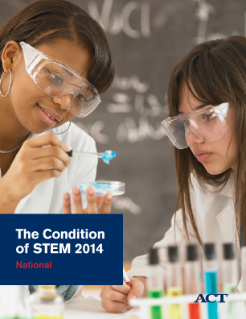Aug 01, 2014
The Condition of STEM 2014
Reviews the 2014 graduating class in STEM (Science, Technology, Engineering, Mathematics)-related fields to determine interest levels in specific STEM fields and, more importantly, readiness in math and science of those interested in STEM careers.
Size: 1.6MB |
Pages: 29
